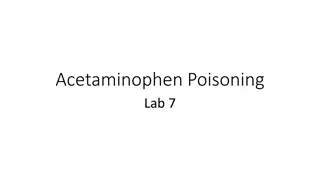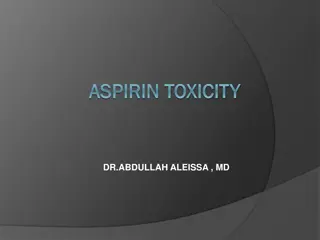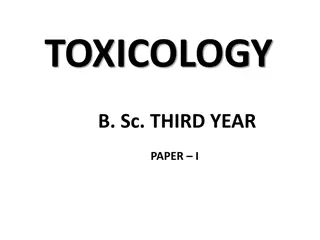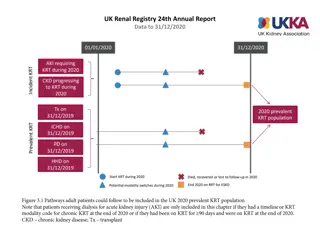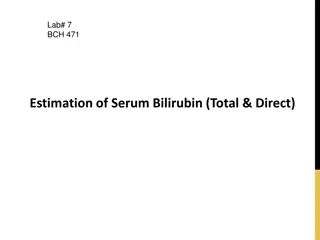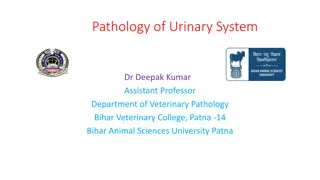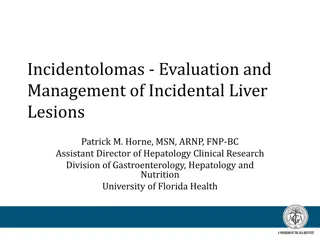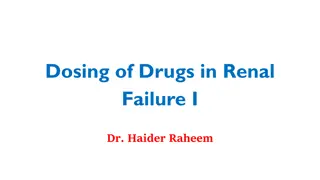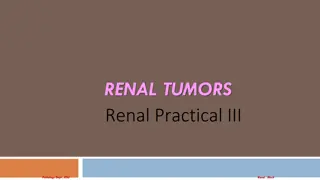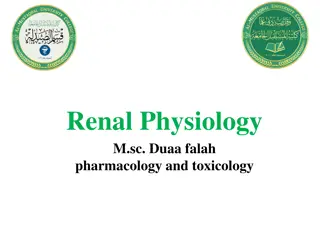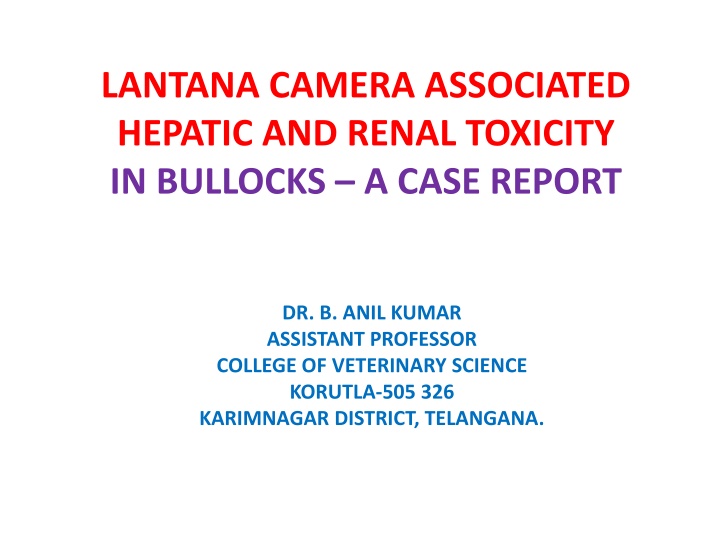
Lantana-Associated Hepatic and Renal Toxicity in Bullocks: A Case Report
Lantana, a toxic plant affecting various species, is known to cause hepatic, renal toxicity and photosensitization in animals. This case report illustrates the impact on two bullocks, detailing symptoms, toxicodynamics, diagnosis, and owner-animal particulars.
Download Presentation

Please find below an Image/Link to download the presentation.
The content on the website is provided AS IS for your information and personal use only. It may not be sold, licensed, or shared on other websites without obtaining consent from the author. If you encounter any issues during the download, it is possible that the publisher has removed the file from their server.
You are allowed to download the files provided on this website for personal or commercial use, subject to the condition that they are used lawfully. All files are the property of their respective owners.
The content on the website is provided AS IS for your information and personal use only. It may not be sold, licensed, or shared on other websites without obtaining consent from the author.
E N D
Presentation Transcript
LANTANA CAMERA ASSOCIATED HEPATIC AND RENAL TOXICITY IN BULLOCKS A CASE REPORT DR. B. ANIL KUMAR ASSISTANT PROFESSOR COLLEGE OF VETERINARY SCIENCE KORUTLA-505 326 KARIMNAGAR DISTRICT, TELANGANA.
Overview Lantana was introduced in India in 1807 as ornamental herb. Species effected: cattle, sheep, goat, horses, pigs, wild animals, rabbit, guinea pigs 1stpoisoning reported in Australia (Townville) in 1910 1stIncidences of Poisoning in buffalo (Kangra valley, H.P.), sheep, goats (Rampur bushier) Toxic principle: Lantadine A,B,C,D (Triterpanoid) effect bile canaliculi Known to cause Hepatotoxicity, nephrotoxicity and photosensitization.
Toxicodynamics Ingestion of plant Absorption from rumen and S I Liver Metabolism Secretion of metabolates in to bile Injury to bile canalicular membrane Cholestasis, hepatitis Retention of bilirubin, phylloerythrin and ruminal stasis Jaundice Photosensitization pH alkaline (NH4&N2) Renal damage
Symptoms Anorexia Ruminal motility ceases up after 6hr and atony seen after 24 hrs Complete constipation/impaction Rumination ceased Dehydration Icterus after 2-4 days Skin changes due photosensitization Death due to hepatic and renal failure
Diagnosis History Clinical sign Laboratory test: Liver: ALT, AST, ALP, GGT & Bilirubin kidney: BUN & Creatinine, HPLC: Diagnosis of lantadine in the ruminal content, peaks on chromatogram 2.43 min and 7.01 min (Narendra Vyas, and Ameeta Argal, 2014 ) Thin layer chromatography
PARTICULARS OF OWNER & ANIMAL Case No. 69 & 70 Date: 11-07-2014 Owner Particulars: S. Ravi, Chaulamaddi Villaga, Korutla Mandal Karimnagar district, Telangana. Animal Particulars: Species : Bovine Breed : ND Sex : Male (Bullock) Age : 10 years Colour : White
History Two Bullock were brought to the Teaching Veterinary Clinical Complex, College of Veterinary Science, Korutla with the history of anorexia and voiding scanty faeces since 3 days . Owner has reported that 4 days back, unknowingly two bulls had entered the near by village and were there for one entire day . Next day owner found them grazing on lantana plants. From that day onwards they were not taking feed and voiding scanty faeces. Owner has taken them to near by Veterinary hospital for 2 days but there was no improvement. There treated with rumentorics and B-complex injections.
CLINCAL EXAMINATION Detailed clinical examination has revealed, Temp Pulse Heart rate Resp. rate C.M.M. B.M.M. Rumen motility :Atony Rumen liquor pH: 8.0 Lymph nodes : 1020F : 84/ minute : 47 beats/ minute : 37/ minute : Icteric (Moreicteric in one animal) : Normal : Normal
General body condition Demeanor Profuse frothy salivation also noticed We have collected dung, urine and blood. Faecal sample is negative for parasitic ova Peripheral blood smear is negative for haemoprotozoans Urine examination: Colour : Deep yellow Odour : Slight pungent Hay s test : positive for bile salts : Lean and severely dehydrated : Dull and very weak
SERUM ANALYSIS ALT values (IU): 74.3 IU/micro lit. (14-38) ALP values (IU): 235.3 IU/micro lit. (90-170) BUN values (mg%): 41.26 mg (20-30) Serum Creatinine (mg %): 4.39 mg % (1-2) Serum Bilirubin (mg %): 0.84mg % (0.1-0.5) Indicating both hepatic and renal insufficiency.
TREATMENT Animals are treated with the following medication Inj. DNS 5D @ 1350 mL i.v Admin. of activated charcoal @1.0kg in 10 liters of water Magnesium sulphate @50gram p.o Inj. Histanil 20 mL i.m Inj. Enrofloxacin 20 mL i.m Inj. Melonex 15 mL i.m Inj. Belamyl 20 mL i.m Rumentas bolus @ 4 boli daily for 3 days Prescribed Liv-52 syrup @ 50 ml orally BID for 15 days. 1stDay 5 Days
Bullocks started defaecating by 2ndday and started taking green grass from 4thday onwards and recovered fully by 7thday.

